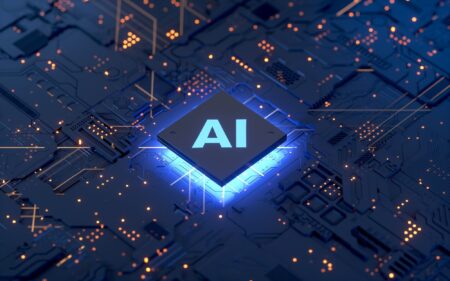Artificial intelligence (AI) has significantly transformed the landscape of academic integrity in recent times. While it has been around for decades, its effects in the classroom have been profound in the past year. The term AI was coined by John McCarthy in 1956. Nonetheless, AI itself existed from 1967 when Alison Knowles used FORTRAN programming language to write poems. Prior to that, Alan Turing had initiated a discussion in 1951 around the concept when he asked, “Can computers think?” AI started getting increasing popularity in 2014 when the Associated Press became the first newsroom to have an AI editor. The Washington Post followed suit as it used Heliograph to write articles for the Rio Olympics in 2016.
Today, there are various AI writing services, such as ChatGPT and JasperAI, accessible to the mainstream that allows students, researchers, and writers to input several prompts so that the AI writer can generate an article or essay. These tools have become sophisticated enough to write decent essays for students. But the question is, if a student turns in such an essay, is that cheating?
While writing with an AI can seem harmless and possibly improves work efficiency, its use in academic writing has generated serious concerns. Educators are increasingly worried that using AI in academic essay writing is equivalent to cheating or plagiarism. But to understand whether using AI in academic writing is cheating, we must understand what plagiarism is and whether AI falls under the purview of that or not. According to the University of Oxford, plagiarism is, “presenting someone else’s ideas or work as your own, with or without their consent, by incorporating it into your work without full acknowledgment.” So, if you take content from disparate sources and copy-paste directly into your academic essay, that will count as plagiarism.
However, it’s technically unavoidable to use AI today. For example, we all use software to help us write. Microsoft Word will point out when you’re using passive voice, misspelled words, and using disagreeing subjects and verbs. Gmail makes suggestions on how to complete sentences. We also use Grammarly to review spelling, grammar, clarity, punctuation, and engagement in English texts. We don’t think of these tools as unfair. But it’s clearly unethical to present someone else’s work as your own. This premise means that just cutting and pasting AI output into an essay and turning it in is dishonest. It is exactly the same way as it is dishonest using somebody else’s work without proper referencing. So, where should we draw the line?
Table of Contents
Is Using AI to Write a Paper Cheating?
Undoubtedly, AI has dramatically altered how students approach their academic responsibilities, including writing papers. From aiding with research to providing insights into structuring essays, AI has become a widely utilized tool in academic settings. The practice of using AI to write
essays or papers is on the rise, an occurrence that has elicited both praise and criticism from various corners of academia and beyond.
While AI undoubtedly presents enormous potential for improving the writing process, it also gives rise to profound ethical concerns. Essentially, the question is, is it ethical to use AI? When students use AI to write papers, they essentially delegate part of their responsibility to a machine. This delegation leads to uncertainties about authorship. From one perspective, it can be seen as an innovative utilization of available technology to enhance the quality of their work. On the other hand, critics argue that it borders on academic dishonesty, akin to plagiarism since it allows students to present machine-generated content as their own original thought.
Besides, there are numerous instances where students using AI have been caught, raising questions about the transparency and fairness of this practice. Educational institutions often value original thought and individual effort. This commitment is compromised when students submit work generated by AI. Critics argue that allowing AI-written essays renders human effort and intellectual prowess obsolete, which potentially undermines the very essence of education.
Yet, AI tools are not autonomous entities. They require human input and guidance to function. The technology’s role can be seen as complementary, augmenting human capacity rather than replacing it. As AI continues to permeate the academic world, it’s imperative for educational institutions to establish clear guidelines on how these tools should be used. Only then can the line between resourcefulness and cheating become unequivocally clear.
Bridging the Gap
While the discourse on the use of AI in academic writing continues, it’s pertinent to highlight that students have been seeking external assistance to improve their academic performance and writing skills for a long time. For example, a professional essay writing service CustomWritings has become a common resort for many students. These services offer model papers that serve as a guide for students to write compelling papers. Unlike AI-generated essays, which can blur the line between original thought and machine output, these professionally crafted samples demonstrate research practices, structure, and style, thereby enhancing students’ understanding and proficiency in academic writing. In essence, it’s a tool to study and learn, rather than an attempt to bypass the process of learning itself.
Using AI in Academic Writing to Avoid Plagiarism
It’s now clear that using AI in academic writing is a double-edged sword. While the ethical implications of students using AI to write papers remain a heated topic, its application also carries the potential to minimize, if not eradicate, instances of plagiarism. By understanding and effectively utilizing these technological tools, students can ensure they uphold the integrity of their work. Here are ways you can leverage AI to avoid plagiarism and cheating in academic writing:
- AI Writing Assistants: Certain AI writing assistants assist students with their work by offering suggestions for improving grammar, style, and coherence while ensuring that the work remains plagiarism-free.
- Educational Tutorials: you can use various AI-based platforms for tutorials and lessons about plagiarism, citation, and ethical writing practices. These tutorials help students understand the significance of academic integrity and help them write original papers.
- Plagiarism Detection: There are many AI-powered tools that can thoroughly scan academic papers and detect potential instances of plagiarism. These tools enable students to identify and rectify any unintentional plagiarism before submission.
- Paraphrasing Tools: AI-based paraphrasing tools can help students reword their content without losing its original meaning, thus avoiding direct plagiarism. However, students must maintain the integrity of the source’s ideas and credit them appropriately.
- Citation Generators: Proper citation is key to avoiding plagiarism. AI-powered citation generators simplify this process by automatically generating citations in the required format.
Embrace Technology but Uphold Integrity
The use of AI is a disruptive technology, especially in education. However, this intersection is not without its complications. From the potential for AI-generated essays to blur lines of authorship to the promising role of AI in curbing plagiarism, the implications are vast and complex. As we continue to explore this new frontier, students, educators, and institutions alike must approach it with both open-mindedness and caution. Reviewing academic integrity policies with students and openly discussing AI writing and its place in the classroom is the way to clarify boundaries and build communication channels with students.


